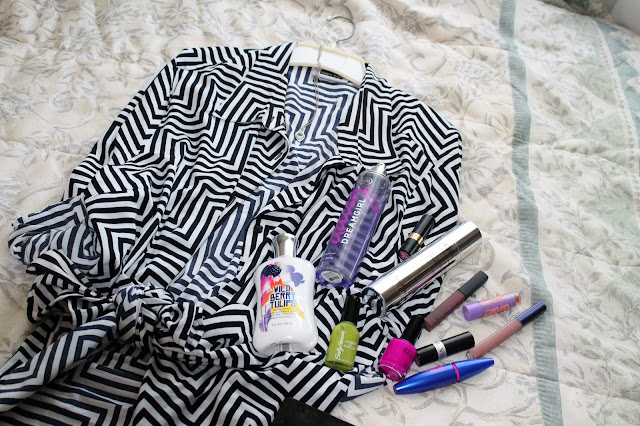For those in love with fashion, I bet your favorite times of year come around September and February, right? Fashion Week galore. You see beautiful, size 2 models strutting down the runways in the latest designer pieces. But as someone who loves fashion, I can’t help but notice a problem.
Why is it that they send size 2 models to show off clothing that is supposed to reach a market far broader than the size 2′s of the world? The average American woman is a size 14. Size 14! Why would we decide to use a size double zero, 0, 1 or 2 model when the clothing is supposed to appeal to a size 14 woman?
“I look like a freaking mom!” said senior Arianne Kobler. Her theory is the conjoining of fashion and lifestyle choices that hinder the plus-size community. “I don’t think that you have the right to dress cute just because of a certain lifestyle choice. If I decide that I want to eat 50 cheeseburgers, not that I ever will, I can and it’s no one’s business!”
Many companies, like Abercrombie & Fitch, refuse to go plus-size because it is not the brand’s “image.” In May 2013, CEO Mike Jeffries stated, “We want to market to cool- good-looking people. We don’t market to anyone other than that.”
Many bloggers and media personnel lashed out against Jeffries in response, resulting in a public apology.
“Their clothes aren’t that cute anyway!” Kobler said.
It’s a little known fact that plus-size consumers make up about 67% of all apparel purchases, and junior Ashley Landrum thinks the idea of producing plus-size fashion should be more appealing.
“It should be supply and demand,” she said. “If people know that the lack of plus-size clothing is a problem, why wouldn’t they change it and make more money?”
Landrum proposed the ideas of mainstreaming plus-size fashion and opening it up to the media as ways of addressing this social problem. “Encourage newer designers to design plus-size fashion along with regular women sizes.”
“Project Runway” mentor Tim Gunn shared his opinions on retailers and designers not embracing the plus-size market. One of the challenges on “Project Runway” is to design for a “regular woman.” This is one of the designers’ toughest challenges. In an interview with The Huffington Post, Gunn states, “When I’m working in the real world with real women and we’re shopping, we find that fashion seems to end when you get any larger than a size 12. How ridiculous is that?”
Gunn continues to remind the designers that the plus-size industry is a growing and demanding market. Why wouldn’t people want to hop on a bandwagon that is sure to land them a great amount of money and appreciation?
As an example, Gunn paints this picture for us: “Go to Lord & Taylor on Fifth Avenue, I think it’s the eighth floor, and it’s just a department called ‘Woman.’ It’s rather devastating. You’ve never seen such hideous clothes in your entire life. I mean, it’s simply appalling. Thank God there are no windows on that floor, because if I were a size 18, I’d throw myself right out the window (after seeing those clothes). It’s insulting what these designers do to these women.”
This is the perfect example of what’s wrong with retailers when it comes to plus-size style. Just because some women are bigger, doesn't mean they don’t want to be as stylish as the size 2 strutting down the runway. Incidences like Lord & Taylor attest to the fact most retailers don’t take the time to actually send their buyer out to find trendy pieces that are bigger sizes.
On the other hand, many retailers have embraced plus-sizes. Stores like Modcloth, Asos, Forever 21, H&M and many others have branched out. According to Aimee Chesire, founder and CEO of Madison Plus Select, most popular brands are holding on to the “high margin, skinny customer” aspect. If it isn’t broken, don’t fix it. She also compares this idea to newspapers refusing to go online. The change to plus-size is ultimately inevitable; it’s just a matter of when.
Contrary to popular belief, there is a higher cost when it comes to producing plus-size clothing. The cost can be even higher than some designers are comfortable with, but with the need for stylish, plus-size clothing in such high demand, that money would be made in the markup. Although plus size is considered a specialty size, it’s definitely not unpopular.
“Fashion should be an outlet,” sophomore Brianna Jackson said. “Since I’m between sizes, I hate going to stores and them not have things I need in the right sizes.”
Keep in mind there is a different formula in developing plus-size clothing. Smaller women are essentially a “flat” surface. A flat surface doesn't need much dimension, whereas in plus size clothing, designers must take in the rate of how a woman grows. Women come in all different body shapes and sizes. For example, some women are considered stout, short and wide. Some women are considered slim, tall and thin. Then, within the body type, you have different body shapes: pear, apple, hourglass, etc. It’s harder to design for dimension and contour.
Making plus-size clothing more readily available for the market will provide a huge change. One potential solution is to start with the young, up-and-coming designers. The young designers hold the future of fashion. If we can persuade them to make or design plus-size clothing, along with regular sizes, there wouldn't be such a huge demand for bigger clothing.
Although it will take more time than patience, I do believe that the fashion industry is on the right track to branching out into plus-size clothing. Fashion trends are a cycle, and so is change.



















